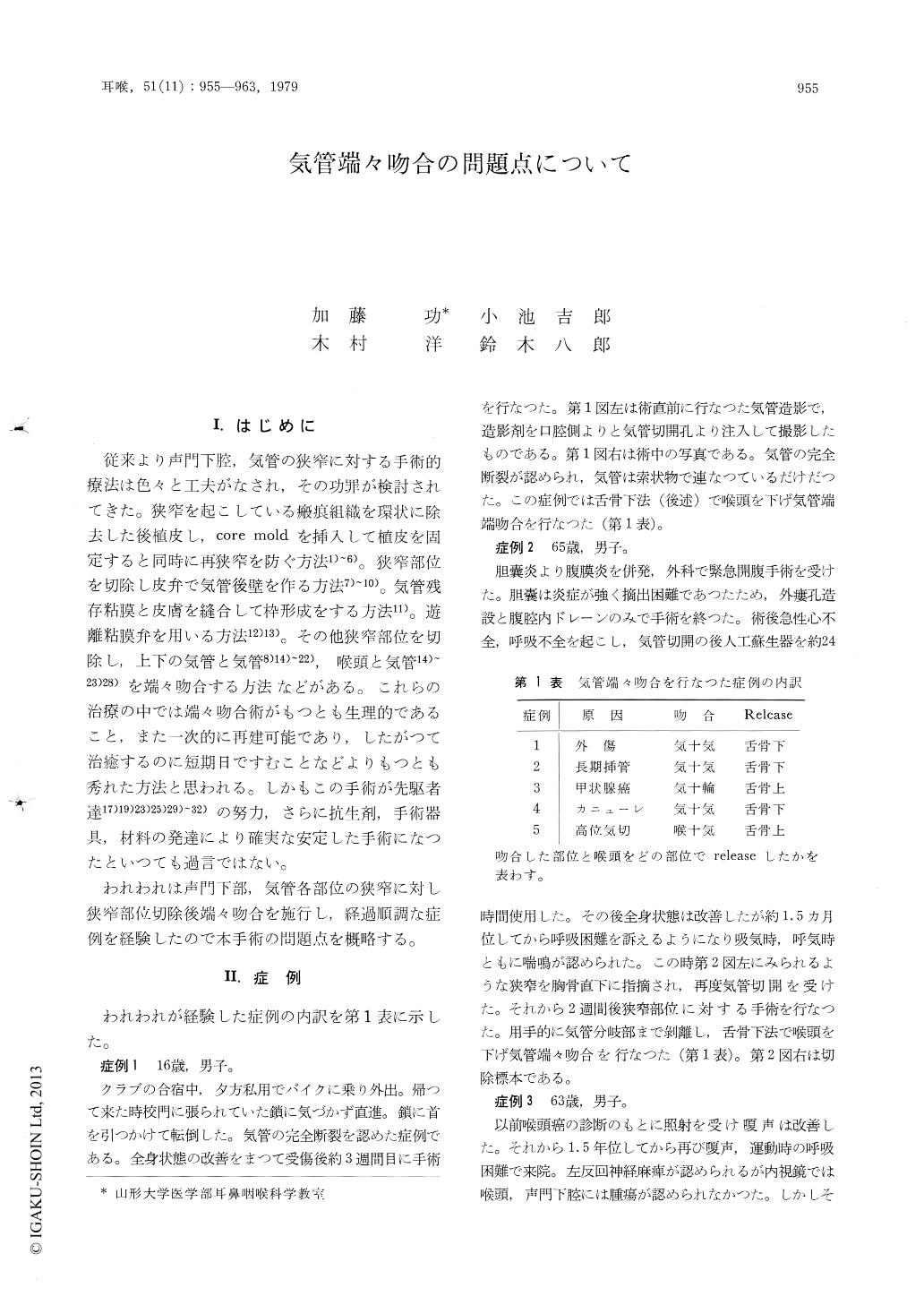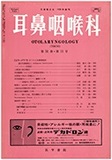Japanese
English
- 有料閲覧
- Abstract 文献概要
- 1ページ目 Look Inside
I.はじめに
従来より声門下腔,気管の狭窄に対する手術的療法は色々と工夫がなされ,その功罪が検討されてきた。狭窄を起こしている瘢痕組織を環状に除去した後植皮し,corc moldを挿入して植皮を固定すると同時に再狭窄を防ぐ方法1)〜6)。狭窄部位を切除し皮弁で気管後壁を作る方法7)〜10)。気管残存粘膜と皮膚を縫合して枠形成をする方法11)。遊離粘膜弁を用いる方法12)13)。その他狭窄部位を切除し,上下の気管と気管8)14)〜22),喉頭と気管14)〜23)28)を端々吻合する方法などがある。これらの治療の中では端々吻合術がもつとも生理的であること,また一次的に再建可能であり,したがつて治癒するのに短期日ですむことなどよりもつとも秀れた方法と思われる。しかもこの手術が先駆者達17)19)23)25)29)〜32)の努力,さらに抗生剤,手術器具,材料の発達により確実な安定した手術になつたといつても過言ではない。
われわれは声門下部,気管各部位の狭窄に対し狭窄部位切除後端々吻合を施行し,経過順調な症例を経験したので本手術の問題点を概略する。
In order to appose the cut edges without significant tension, the laryngeal drop procedures are mandatory. There are two kinds of operative procedures, i.e., suprahyoid and infrahyoid release techniques. As a result of comparison between them performed in five patients, the suprahyoid technique was much more simple and took shorter time to perform than the other because neither the important vessels nor the nerves exist in the suprahyoid region. Furthermore, no trouble with deglutition was observed. On the basis of operative procedures, some anatomical considerations were made with the end-to-end anastomosis of the cervical trachea.

Copyright © 1979, Igaku-Shoin Ltd. All rights reserved.


